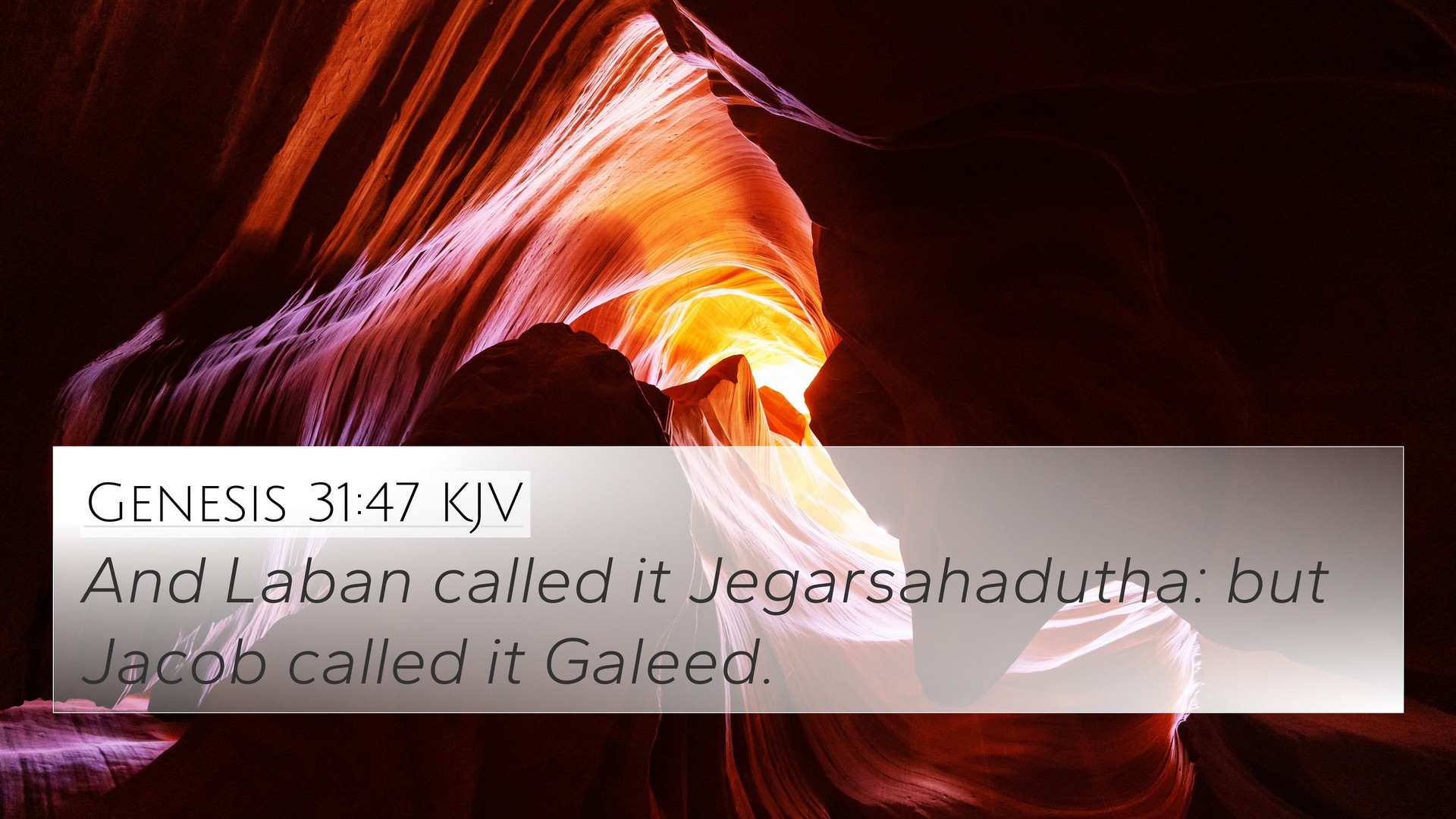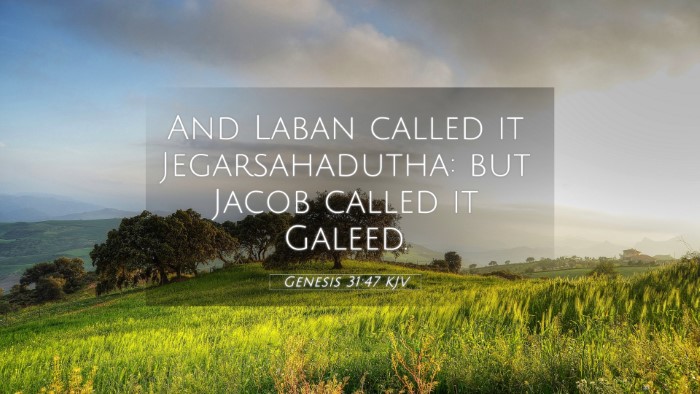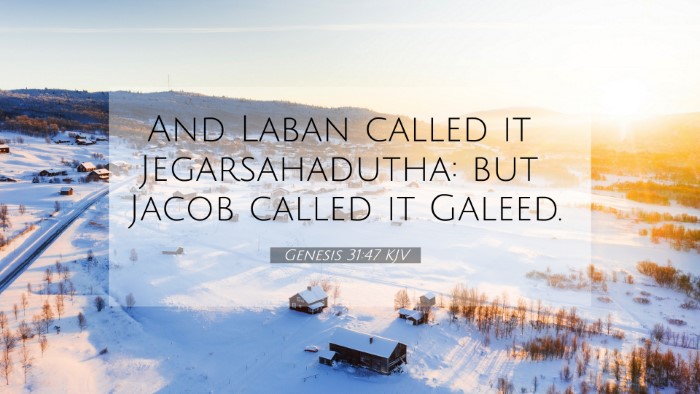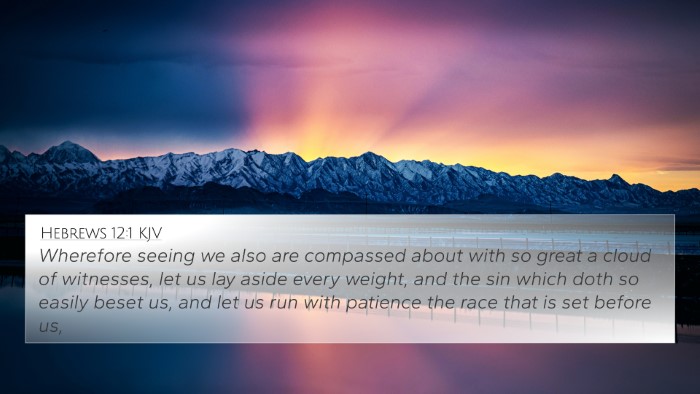Understanding Genesis 31:47
Genesis 31:47 records a significant moment during the interaction between Jacob and Laban when they established an agreement, marked by the setting up of a stone heap as a witness to their covenant. In this verse, the name "Galeed" (which means "witness heap") symbolizes the importance of witness in their dealings. This moment can be explored through various commentaries that highlight its theological implications and connections to the broader themes throughout the Bible.
Verse Context
This verse is situated within the narrative of Jacob's escape from Laban, who had been deceitful and exploitative towards Jacob. The naming of the stone pile signifies the importance of oaths, covenants, and the implications of their relationships in the biblical tradition. The themes of witness and covenant resonate throughout biblical texts, establishing a framework for understanding God's dealings with humanity.
Commentary Insights
-
Matthew Henry:
Henry emphasizes the importance of oaths and agreements in the life of the patriarchs. He notes how the heap of stones serves as a memorial not only of the covenant but also as a reminder of God’s fidelity to His promises. This establishes a precedent for future generations regarding the significance of honoring commitments and the essence of integrity in relationships.
-
Albert Barnes:
Barnes comments on the emotional weight of this encounter. He highlights how both Jacob and Laban recognized the need for a boundary, both physical and relational. The naming of the stone heap implies their mutual respect and the distinction that separates Jacob's life from Laban's former control, framing their covenant in light of mutual accountability and respect.
-
Adam Clarke:
Clarke provides insights on the cultural practices surrounding covenant-making in ancient Near Eastern societies. He explains that the act of creating a heap of stones served as a public declaration, ensuring that future generations could learn about the commitments made. This act signified a pact that was both social and spiritual, linking it to God's covenant with His people.
Cross-References and Connections
Genesis 31:47 can be linked with several other scriptures that illuminate its themes of covenant, witness, and divine fidelity. Below are key cross-references that enrich the understanding of this verse:
-
Genesis 31:48-50:
This passage details further discussions between Jacob and Laban, emphasizing the importance of their agreement.
-
Exodus 20:16:
Relates to the commandment against bearing false witness, highlighting the ethical implications of truthfulness in relationships.
-
Deuteronomy 19:15:
Discusses the importance of witnesses in establishing truth, paralleling the emphasis on witness in Genesis 31:47.
-
Joshua 24:27:
Refers to a stone as a witness, affirming the cultural significance of stones as memorials in biblical covenants.
-
1 Samuel 7:12:
Samuel sets up a stone after a victory as a witness to God's help, showcasing the thematic continuity of stone memorials.
-
2 Corinthians 1:22:
Here, Paul speaks of God's promises being established, emphasizing the reliability of God's commitments in contrast to human agreements.
-
Hebrews 6:16-18:
This New Testament passage discusses the significance of oaths and promises, linking to the covenant themes in the Old Testament.
Thematic Connections
The themes present in Genesis 31:47 resonate with several biblical concepts:
-
The Covenant: The emotional and divine importance of covenants is foundational throughout Scripture, beginning from God's covenant with Abraham and extending to modern believers.
-
Witness and Accountability: The notion of giving a witness is central to the integrity of relationships. This theme underlines the significance of truth-telling and maintaining one's commitments in biblical texts.
-
Separation and New Beginnings: Jacob's departure from Laban symbolizes a new chapter in his life, mirroring how God's covenants often represent transitions and new beginnings for His people.
Tools for Bible Cross-Referencing
For those looking to delve deeper into cross-referencing in the Bible, here are useful tools and methods:
-
Bible Concordance: A comprehensive index of words and phrases found in the Scriptures that can guide users in finding related verses.
-
Bible Cross-Reference Guide: Helps in identifying thematic connections across different books of the Bible, providing a structured approach to study.
-
Cross-reference Bible Study: Engaging in practices that involve comparing verses side-by-side for deeper understanding and insight.
-
Comprehensive Bible Cross-reference Materials: Utilizing various resources that provide extensive listings and explanations of biblical connections.
Conclusion
Genesis 31:47 encapsulates themes of covenant, witness, and divine fidelity that are interwoven throughout both the Old and New Testaments. The insights from various commentaries enhance the understanding of this verse, inviting readers to explore its deeper meanings while utilizing the rich landscape of biblical cross-referencing to connect similar scriptures. This approach allows for a fuller understanding of God’s interaction with humanity and the significance of our agreements, both with one another and with God Himself.



